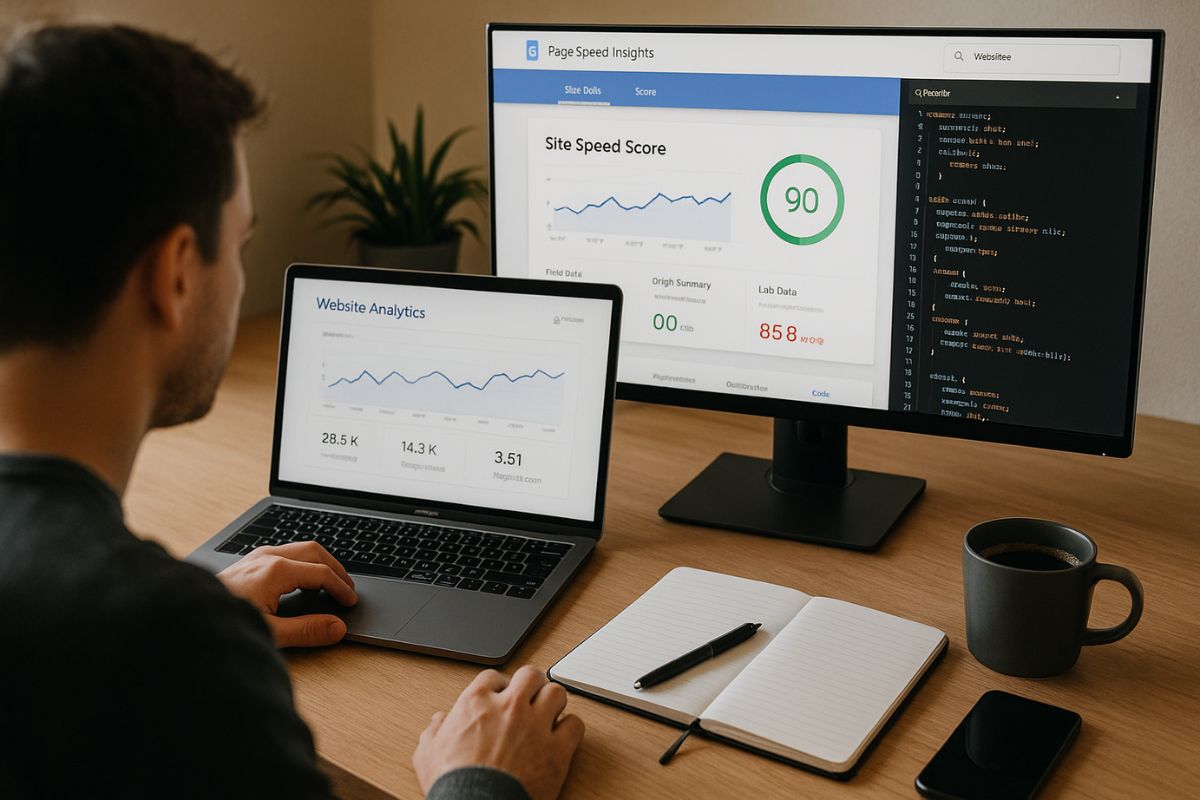No one likes a slow website. Waiting just a few extra seconds can turn visitors away before they even see what you have to offer. And it’s not just users who care—search engines notice it too. That’s why website speed plays such a big role in how well your site performs in search results. Speed impacts user experience, bounce rates, conversions, and ultimately, your visibility.
For startups, small businesses, and growing platforms, speed can be the difference between success and silence. Whether you’re managing an online store or building a SaaS product, your website’s speed affects how customers interact with your brand. Getting it right doesn’t require magic—just smart decisions and a little patience.
Why Speed Affects Search Rankings
A faster website helps you rank higher, keeps users engaged, and builds trust.
Google has confirmed that page speed is one of the ranking signals it considers. Fast-loading sites tend to provide better user experiences. When users stay longer and interact more, that sends a positive signal to search engines. If your site takes too long to load, users often leave before it finishes—hurting your bounce rate and your search visibility.
Website speed also affects how quickly search engine bots can crawl your pages. A slow-loading site can mean fewer pages get indexed, reducing your overall reach. Whether you’re optimizing a blog, a landing page, or a product catalog, speed helps everything work better.
Start by Testing Your Site
The first step is understanding how your website performs right now. Tools like PageSpeed Insights, GTmetrix, or WebPageTest give you detailed feedback. They break down what’s slowing your site down and offer specific suggestions to fix it.
These tools measure things like load time, time to first byte, and how long it takes for content to become interactive. You’ll also see how your site performs on mobile devices versus desktops. This gives you a full picture of where improvements are needed most.
Compress Images Without Losing Quality
Large image files are one of the most common causes of slow websites. The solution isn’t to ditch visuals—it’s to optimize them. Use formats like WebP or compressed JPEGs. There are online tools and plugins that help reduce file size without losing visible quality.
You can also use lazy loading, which means images don’t load until the user scrolls down to them. This helps pages load faster upfront and makes the overall experience feel smoother.
Use a Content Delivery Network (CDN)
A CDN stores copies of your website’s files in multiple locations around the world. When someone visits your site, the CDN serves your content from the server closest to them. This reduces load time and keeps things consistent, no matter where your users are.
Many hosting providers now offer built-in CDN support. If not, services like Cloudflare or Bunny.net are easy to set up and often come with added security benefits too.
Minify CSS, JavaScript, and HTML
Your website’s code includes a lot of little pieces that help it look and function well. But some of those elements add extra weight. Minifying code means removing spaces, comments, and unnecessary formatting. This makes files smaller and faster to load.
There are tools that automatically do this for you—especially if you use platforms like WordPress, Shopify, or static site generators. Every millisecond saved adds up.
Reduce Redirects
Every time a browser is redirected to a new page, it adds extra time. Some redirects are necessary—like moving from HTTP to HTTPS—but too many can slow your site down.
Audit your site for old or broken redirects. Make sure your internal links point directly to the right pages and avoid unnecessary chains. Cleaner paths lead to faster experiences.
Enable Browser Caching
When someone visits your website, their browser downloads a lot of information—images, scripts, stylesheets. With browser caching, the browser saves that information, so the next time they visit, it loads much faster.
You can set caching rules using your site’s .htaccess file or through your hosting provider’s dashboard. This helps returning visitors enjoy a quicker experience, and it lightens the load on your server.
Choose the Right Hosting Plan
Your web host plays a big role in how fast your site loads. Shared hosting might be affordable, but it often comes with speed limits—especially during traffic spikes. If you’re seeing slow load times despite other fixes, it might be time to upgrade.
Consider cloud hosting or dedicated servers if your audience is growing. A better plan means more control over performance and fewer interruptions during peak times.
Keep Plugins and Themes Lightweight
If you’re using a CMS like WordPress, plugins can make your site more functional—but they also add bulk. Some are poorly coded or conflict with others, slowing things down.
Stick to plugins you actually use, and regularly audit your list to remove outdated ones. Choose lightweight themes that prioritize speed. A sleek, fast design beats a bloated layout every time.
Optimize Mobile Experience
More users browse on mobile than desktop. If your site isn’t fast on phones, you’re missing out. A mobile-friendly design should load quickly, fit any screen, and be easy to navigate with one hand.
Use responsive layouts, avoid pop-ups that block content, and keep your mobile site as lean as possible. Google indexes mobile pages first, so your rankings depend heavily on mobile performance.
Monitor and Keep Improving
Website speed isn’t a one-time task. As your site grows, new content and features can slow things down again. Set regular reminders to test your site, update your tools, and review your hosting needs.
Staying consistent with optimization means your users enjoy better experiences—and search engines reward that. Even small changes can make a big difference over time.
Improving your website’s speed is one of the smartest steps you can take for better rankings and a better user experience. It shows your audience—and search engines—that you value their time. With the right habits and a little effort, your site can be both fast and effective.
